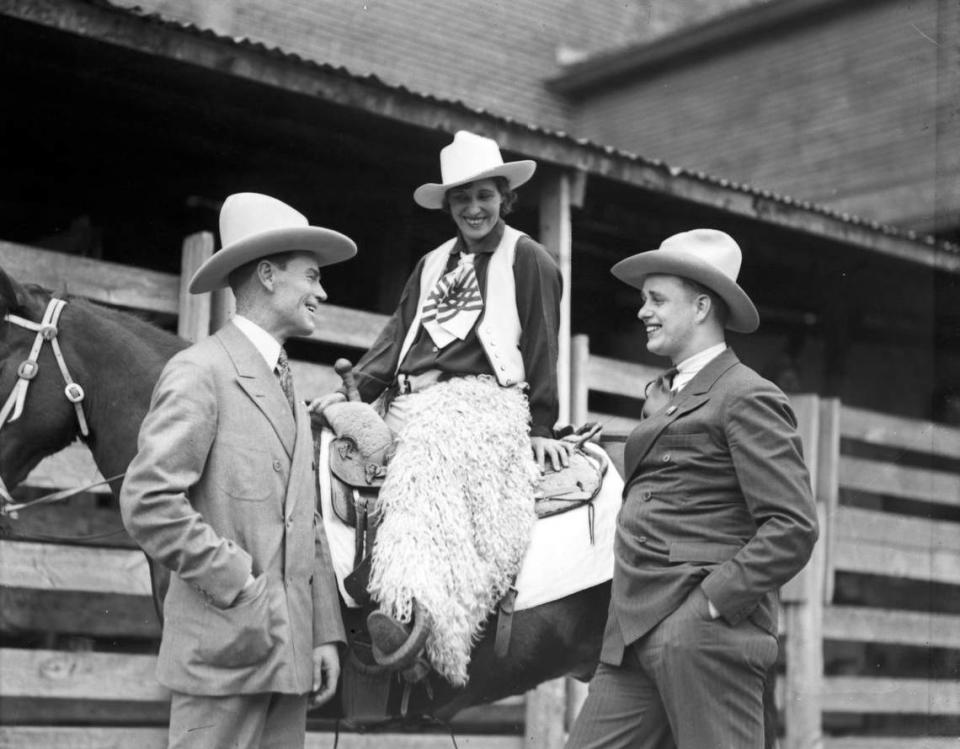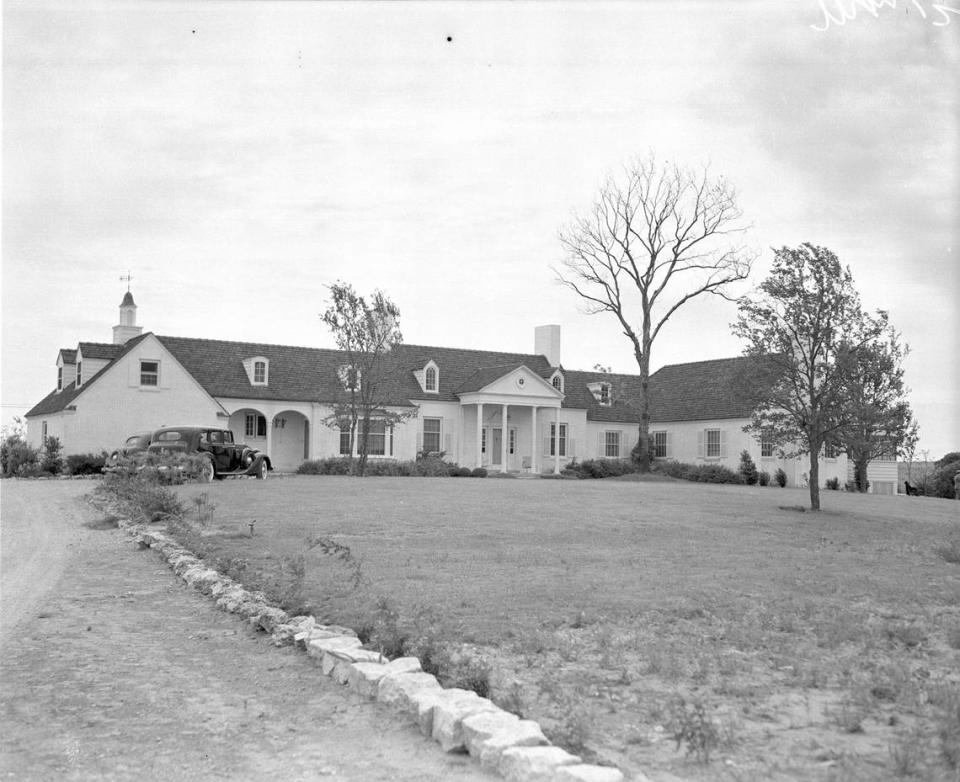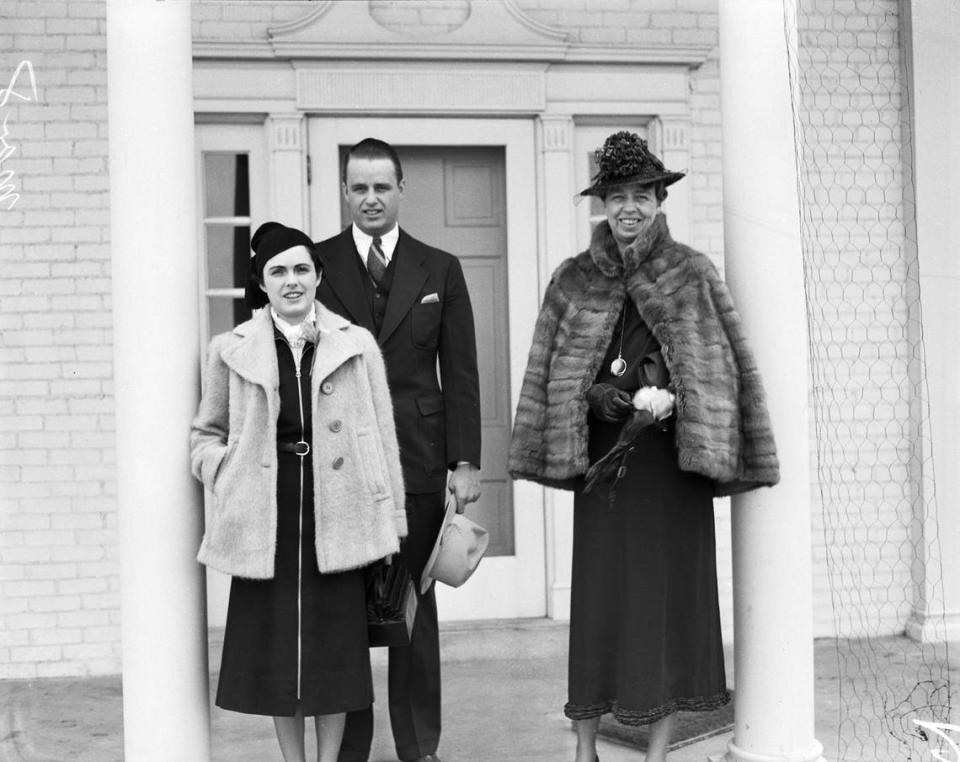FDR and his wife Eleanor Roosevelt spent plenty of time in Fort Worth. Here’s why.
- Oops!Something went wrong.Please try again later.
- Oops!Something went wrong.Please try again later.
The number of Roosevelt Specials served at the Original Mexican Eats Cafe on Camp Bowie Boulevard likely increased over the past few months when residents of Fort Worth thought they were about to savor the last ones available at that location.
(It was announced in March that the Camp Bowie location of the restaurant - the first of two in the city - would close but that was later delayed).
Although the name of the plate containing an enchilada, a taco, and a chalupa topped with guacamole doesn’t appear in the Star-Telegram until the 1970s, it’s a great marketing gimmick. Sadly, it has never been definitively determined whether the tasty plate was named for Franklin Delano Roosevelt or his son Elliott (who was a frequent visitor at the restaurant).
The presence of members of the Roosevelt family in Fort Worth during the 1930s and early 1940s had a lasting effect on the city. The story begins on March 11, 1933, when Franklin Delano Roosevelt’s son, Elliott, made a last minute stop in Fort Worth. Eager civic leaders had heard he was headed to Arizona to study “ranch life” and thought they might introduce him to opportunities in the Fort Worth area. In fact, Elliott was actually headed to Nevada so he could establish residency and obtain a quickie divorce from his first wife, Elizabeth Donner Roosevelt.

The tall, blond-haired Elliott Roosevelt played along - galloping into the Will Rogers Coliseum at the tail end of the grand entry and wearing a white cowboy hat. He and his friend and travel buddy Ralph Hitchcock spent the night at the Hotel Texas. Walter B. Scott, an attorney involved with the Chamber of Commerce, hosted a private dinner there for the young Roosevelt. Probably that is where Elliott Roosevelt first met Ruth Googins, although some sources indicate that the future couple met at a dance in Dallas.
Roosevelt apparently fell hard. His divorce was announced in early June and finalized on July 14, 1933. Elliott Roosevelt and Ruth Googins were married a bit over a week later, on July 22, 1933. Eleanor Roosevelt had already made an obligatory stop in Fort Worth to see her son in early June, just before his divorce was announced. The newlywed couple made their Fort Worth headquarters at the home of Ruth’s parents, Ruth and Joseph Googins, at 1101 Penn St. (now demolished). Initially the young couple moved to Leesburg, Virginia, but visited Fort Worth often. Their first daughter, Ruth Chandler Roosevelt, was born in Fort Worth on May 9, 1934.
It may have been death threats against the child, which occurred in August 1934, Elliott’s love for outdoor life, or Ruth’s close relationship to her parents, but the couple began to inch closer to living in Fort Worth. Elliott spent more time in the area promoting an air derby in conjunction with the Texas Centennial and becoming involved with Texas radio operations.
By mid-June of 1935, the Roosevelts were living at their “new country home,” the Dutch Branch Ranch near Benbrook. Named for the Dutch Branch tributary leading to the Clear Fork of the Trinity River, the 1,300-acre ranch featured a Colonial Revival style home designed by Fort Worth architect Joseph J. Patterson. It is a substantial brick home, painted white - and potentially eligible for the National Register of Historic Places. The house was furnished with handmade Val-Kyll furniture produced by Eleanor Roosevelt’s program, which provided supplemental income for poor farming families.

The complex also had a barn, swimming pool, entrance gate, and employee residence. Elliott began to fill the land with Hereford cattle and a handful of Arabian horses. Because the ranch was in unincorporated Tarrant County, it provided an ideal retreat not only for Elliott and his family, but also for his parents Franklin and Eleanor. The First Lady made a visit in early October 1935, one of a number of frequent visits, which continued until Elliott and Ruth divorced in 1944. Although Eleanor sometimes made speeches, including one during the 1935 visit for the Mobilization for Human Needs, she usually proclaimed that she preferred spending time with the grandchildren.

President Franklin Delano Roosevelt’s visits were more public and political - as were the ones the couple made together. As part of his remarks during a mid-June 1936 trip, he noted that, “you know, I have a particular stake in Fort Worth.” Roosevelt was running for re-election as president, so observing the construction of public expositions like the Frontier Centennial were also high on his list. He was, of course, squired around by Star-Telegram publisher Amon Carter - a situation which probably included a great deal of mutual flattery.
Even though some of the president’s trips didn’t involve speeches, they were strategically arranged. Returning from a fishing expedition in the Gulf of Mexico in May 1937, FDR stayed at the Dutch Branch Ranch where Elliott hosted a barbecue for cattlemen. One of the attendees was powerful financier and head of the Reconstruction Finance Corp., Jesse Jones. The two had been together for some of the fishing trip, but doubtless preferred the more intimate gathering at Dutch Branch as a chance to talk business.
Franklin Delano Roosevelt supported - sometimes enthusiastically, sometimes grudgingly, and sometimes by simply not stopping them - a long list of Fort Worth “New Deal” era projects. We have both FDR and Amon Carter to thank for the Will Rogers Memorial Center, Farrington Field, park improvements around Lake Worth, the Fort Worth Botanic Garden, the Fort Worth Nature Center, Oakhurst Scenic Drive, a number of schools including additions and landscaping, the former City Hall (now the Public Safety and Courts Building), infrastructure at a number of city parks, and the memory of the 1939 Fort Worth Public Library building (demolished).
Elliott’s presence in Texas provided an ear to the ground on behalf of his father. He worked with the Young Democrats of Texas, and his social activities helped maintain FDR’s fundraising connections. The Roosevelt presence in Fort Worth coincided with a large part of Franklin Roosevelt’s time as president. It ended with Elliott and Ruth’s uncontested divorce granted on April 17, 1944. The bloom was off the rose several years earlier, however. Elliott served as an aviator during World War II, and that experience has been blamed as has his loss of interest in a spouse in favor of a new love.
Ruth, who shortly after the divorce married Harry Eidson, sold the ranch to oilman James R. Sharp of Tulsa on July 17, 1944. The cattle were sold off, but the seven Arabian horses were the last to leave - shipped via rail to Elliott and his new wife, actress Faye Emerson, in California. By September 1947, Fort Worth oilman Sid W. Richardson had purchased Dutch Branch Ranch. Many acres of ranch land are now under Lake Benbrook, but the house and a number of outbuildings remain now owned by the Sid Richardson Foundation.
It is one of the many reminders of an era when life was lived large, when newspapers and radio heavily reported the activities of celebrities, and when the more liberal Franklin Delano Roosevelt could work with the more conservative Amon G. Carter to help Fort Worth avoid the worst of the impact of the Great Depression.
Oh - and then there’s the beloved Roosevelt Special.
Carol Roark is an archivist, historian, and author with a special interest in architectural and photographic history who has written several books on Fort Worth history.

